“Ang namatay kong beautician, dalawampu’t lima. Ako na lang ang buhay.”
(I had 25 beauticians and they all died. I’m the only one left.)
These words from a centenarian trans woman onscreen echoed throughout Sine Pop’s cozy cinema. We were halfway through the debut of Eksena!, an intimate queer-run film event that happened on Mar. 23.
After going through short films “Honey” (1983) by Raul Sarmiento, “Rick & Steve the Happiest Gay Couple in the World” (2000) by Allan Brocka, “Palugid” (2001) by Paolo Villaluna, and “Ang High School at Si Olive” (2016) by Keana Trasporte—while navigating feelings of joy, angst, passion, and some questioning at that—I noticed the shift in the room’s atmosphere. The air further thickened as we watched the titular character of Beverly Ramos’ “Dory”—a documentary about the 101-year-old beautician—trail off to pray.
In our room, there were brief sounds of clinking keychains and slow zipping of bags; people were probably panic-rummaging for tissue. A person sitting a few seats in front of me also fished out their handkerchief, lifted their glasses, and continued watching as the protagonist wondered why God let her live that long (which means getting left behind, too).
It didn’t take reaching the end credits (divulging that Dory had already passed in the same year of the film’s release) for the audience to empathize. I even felt the sadness spilling over the screening of the next two films, which packed a lighter, more hopeful tone—Mark Felix Ebreo’s “This is Not a Coming Out Story” (2022) and Samantha Lee’s “It Was A Love Story (After All)” (2022).
View this post on Instagram
It’s probably because beyond Dory’s distinct loneliness, we all shared that momentary grief over how she had to adjust, crouch, and change against her own honest terms when she was alive—if not become entirely hidden.
Even the roster’s other shorts showed how the queer community has long been forced to operate within society this way. In “Ang High School at si Olive,” prolonged stares between the teenage pair feel like a sin, and vulnerable conversations are tucked in restrooms and bedrooms. In “Palugid,” the title right off the bat stresses how members of the LGBTQIA+ community are kept in the fringes. The filmmaker is compelled to find solace—and ultimately survive—in murky spaces and crowded late-night places. Still, there’s worry about making too much noise.
Things even get more difficult when queer love and desire get added to the equation. But the fight towards this is why the community creates and shamelessly show what they create.
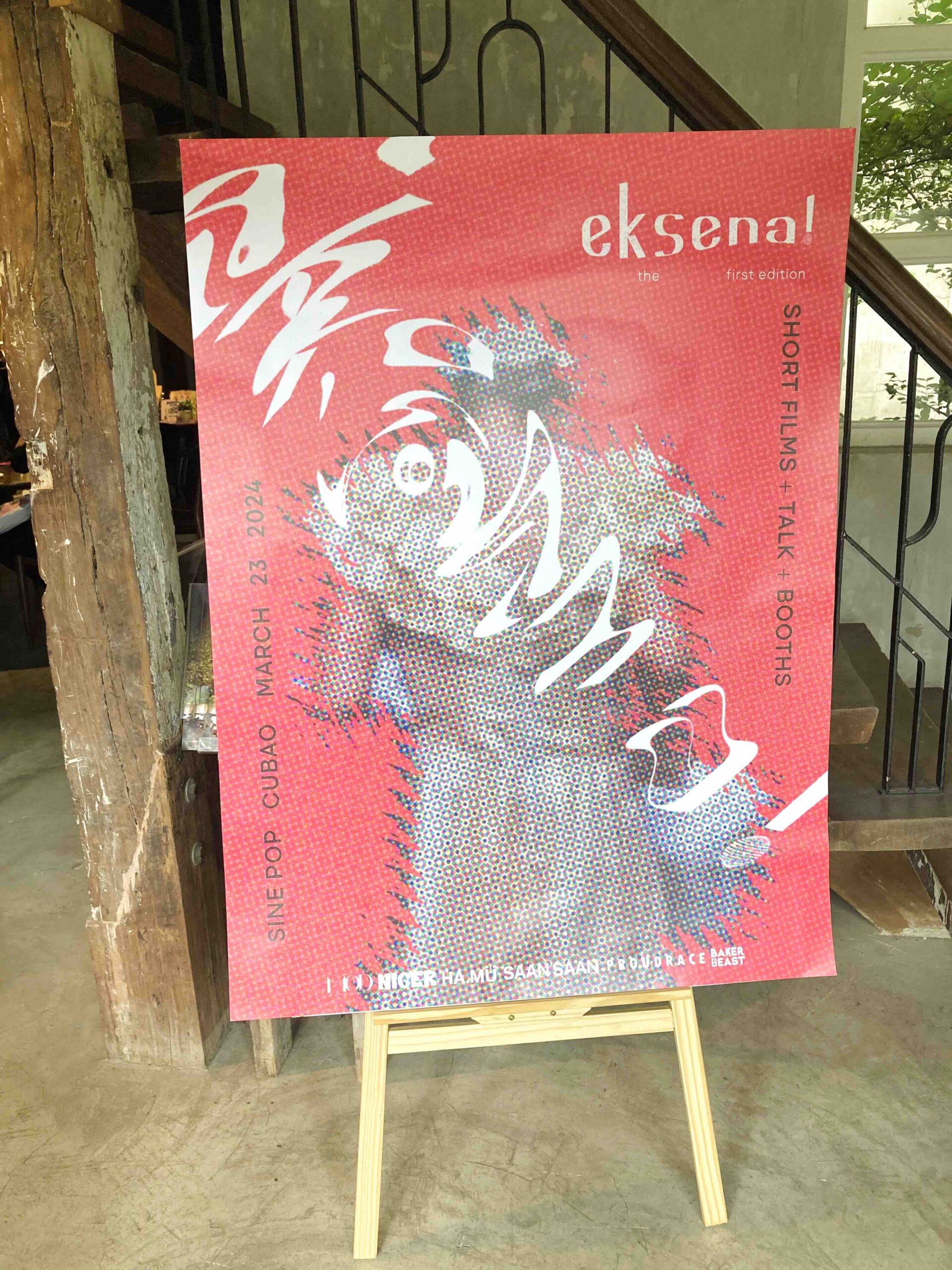
Attendees of Eksena! are warmly welcomed upon stepping inside Sine Pop in Cubao
“Eksena!’s first-edition short film program pays tribute to that genuinely alternative mode of queer film practice—a mode based on an insistence that indeed queer love is love, but it is also more than just love: it is resistance,” says filmmaker-writer Kaj Palanca in the curatorial writeup. “Whereas once there could have only been self-abasing confessions of desire, now no apologia for queer romance is needed.”
Celebrating queer work, queer presence, and queer cinema, film initiative Eksena! also thrives on community. (This is the same thing that gives me comfort when I think about Dory; from the karinderya vendors to her neighbors-slash-customers, at least she had a community.)
Eksena!’s first run not only showcased films spanning four decades, but also highlighted queer businesses through booths, plus put together filmmakers Jade Castro, JP Habac, Samantha Lee, and National Artist Ricky Lee to unpack how relentless Filipino queer cinema has progressed, given the never-ending constraints surrounding the stories and storytellers.
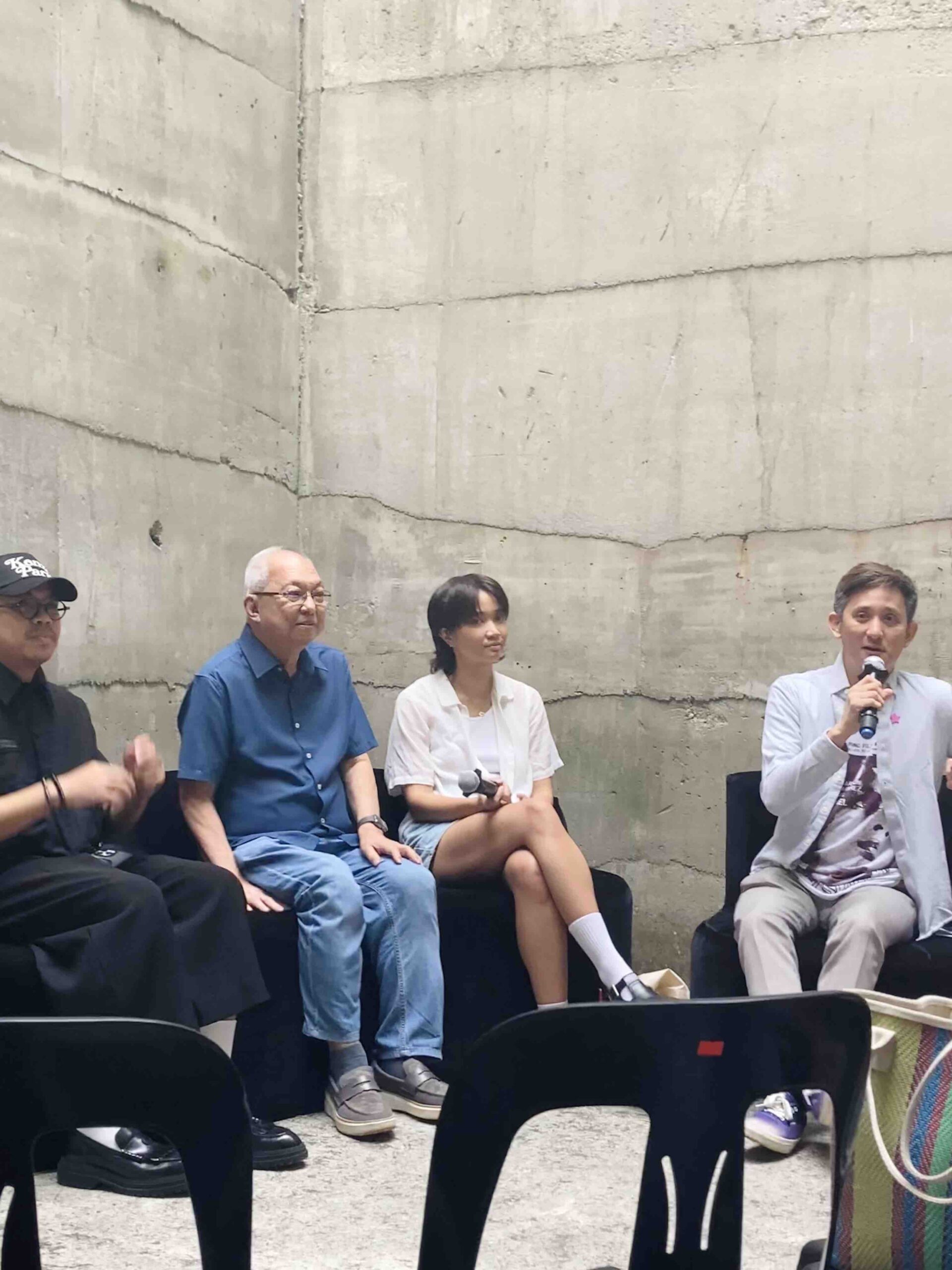
JP Habac, Ricky Lee, Samantha Lee, and Jade Castro during Eksena’s Talk session: “The Past, Present, and Future of Pinoy Queer Cinema”
“I think ang writers, ang filmmakers, lahat tayo rebelde. Lahat tayo nagre-rebelde kasi ang present situation na [so-called] normal ay hindi equal, hindi pantay,” said Ricky.
To dive deeper into the genesis of this new fun, fearless, and all-embracing gathering, we talked to the organizing team Petersen Vargas, Carl Chavez, Celeste Lapida, Kuki Zinampan, Kaj Palanca, Patrick Pangan, and JC Gardiola about their brainstorming, possibility of a second edition, and dreams for Filipino queer cinema.
First of all, I like how this initiative is named “Eksena!” It reminds me of the catchphrase, “Wow, umeeksena!” and in this context, aside from alluding to a film’s “scene,” it sounds like rightfully taking up space. But I’d like to ask about it directly: What was your thought process like in coming up with the name?
Petersen: It was back in January of this year, during the first in-person team huddle, when Eksena! was conceived. I remember brainstorming for what this thing might be called, and our North Star was it just had to sound very unapologetically bakla. We went from the kuning-kunings and to the kinembulars of what could stick, and our very own Kuki Zinampan just blurted out the word “eksena”.
And you’re right, for how it’s double-coded in both its literal and its queer context. It just made perfect sense, and it clicked right away for all of us. We added the “!” just to be cheeky and candid about it, the way taking up our space could feel much louder and prouder.
Can you walk me through the origin story of this queer-focused initiative—from the birth of the idea, formation of a team, to finally putting the pieces together? Plus, what part did you find most challenging in the process?
Petersen: The idea of hosting a series of queer-themed film screenings floated through the years. It was because almost a decade ago, my thesis film got selected in sir Nick Deocampo’s long-running [QC International] Pink [Film] Festival, and for a while now, the fest has come to an indefinite halt. It was because I recently became a jury for the Film Development Council of the Philippines’ own queer film festival Pelikulaya, and how that also came to a stop.
It was because of my visits to cinematheques abroad that had monthly special programs, and how their interior felt more like a hipster bar and lounge before you got to its mini-theater, making a screening event feel like a party. It was conversations with my Singaporean filmmaker friends, about their mission and passion in the Asian Film Archive, and experiencing The Projector for the very first time. It was because I got invited to a student initiative screening of new queer short films just back in Dec. 2023, held at Sine Pop, calling it Yearnfest, knowing full well who their audience is.
View this post on Instagram
The idea was there, but I couldn’t do it alone. As someone in his early 30s [already], I felt like I had to tap younger filmmakers who could forward the interest and needs of young and emerging queer artists, and help me out with the initiative.
The first two people who became part of the team were two of the most exciting young queer filmmakers of their generation: Celeste Lapida (“Somewhere a Destination” (2021); “Contestant #4” (2016)) and Kuki Zinampan (“Nang Maglublob Ako sa Isang Mangkok ng Liwanag” (2021)). I also tapped one of my best friends in the industry, filmmaker and marketing expert Carl Chavez (“Sorry for the Inconvenience” (2017)), because we needed to get Eksena! out there eventually, and effectively at that, with such a tight time bomb to D-day.
When we needed to solidify the branding, we took in Patrick Pangan (“We Were Never Really Strangers” (2022)) to be his own one-man team. When we needed to finalize the short film program and consequentially, prepare notes on the team’s curation and the final set of films, Kaj Palanca (“Henry” (2021); “Contestant #4” (2016)) came in to do the job. When we were going to officially open ticket sales, my dearest boyfriend and all-around partner in life, JC Gardiola, managed all things registration.
We didn’t really have a one-way process to everything, and it felt like we had to wing it every step of the way, but at least we were winging it all together. The team is grateful that once we set up our Instagram, word about Eksena! just kind of spread on its own, and we felt like we were hitting our target audience, which is mainly younger people who may want a taste of the program we prepared. [We’re] grateful for the generosity of Sine Pop, and the other guest merchants and panelists we invited who aligned with our vision instantly and said yes to us in a heartbeat.
View this post on Instagram
Let’s talk about the short film roster. Honestly, I didn’t check the lineup prior to watching because I wanted to go into it blindly, as I do with some of my cinema experiences. I honestly assumed that the first film was relatively recent, and just stylized/edited to look like something from the ’80s, and I felt puzzled for a moment since it had homophobic undertones. I was trying to consider that maybe it was irony or a commentary in itself, but then I heard Kaj’s confirmation about it. I really appreciate your inclusion of it to genuinely show how queer cinema has progressed. Can you tell me more about the curation?
Petersen: My challenge to the team when I was toying around the idea of a short film program was to think of works that came from each decade, starting from the 1980s all the way up to the 2020s. We wanted to center not so much around the representation of queerness but zoning in specifically on how queer desire was depicted throughout the decades.
We built a long-list of about 20-something short films, exhausting our resource persons from our friends working at institutions like Mowelfund, Cinemalaya, and Gawad CCP, faculty members from film schools, and past organizers of queer festivals like sir Nick Deocampo himself. We spent an entire night screening through the long-list chronologically, seeing the means and ways filmmakers on the fringes have tried to experiment and play with the medium of film in really inspiring and exciting ways.
I always thought that queer artists, or queer-themed art, as much as queerness exists in the margins and peripheries of society, are also relegated in the same oppressed corners of the industry. We always fought—and best be damned, insisted—that our own work can take up space, and that we should keep at it, without fear of malice or judgment.
As Kaj wrote on our curatorial statement: “Despite tendencies to relegate them to the fringes of a cinematic canon, queer filmmakers have been adamant to use film to carve out their place in the world. The very same conditions of marginality, which have kept people from displaying their queerness out and in full, have compelled queer artists to keep pushing back against convention, and to find ever novel ways of bending convention to their will. Eksena!’s first-edition short film program pays tribute to that genuinely alternative mode of queer film practice—a mode based on an insistence that indeed queer love is love, but it is also more than just love; it is resistance.”
We ended up with seven short films spanning from the ’80s to present day, of varying themes and genres, shot in 16mm, then on digital SLRs and professional cameras, and one even on a smartphone.
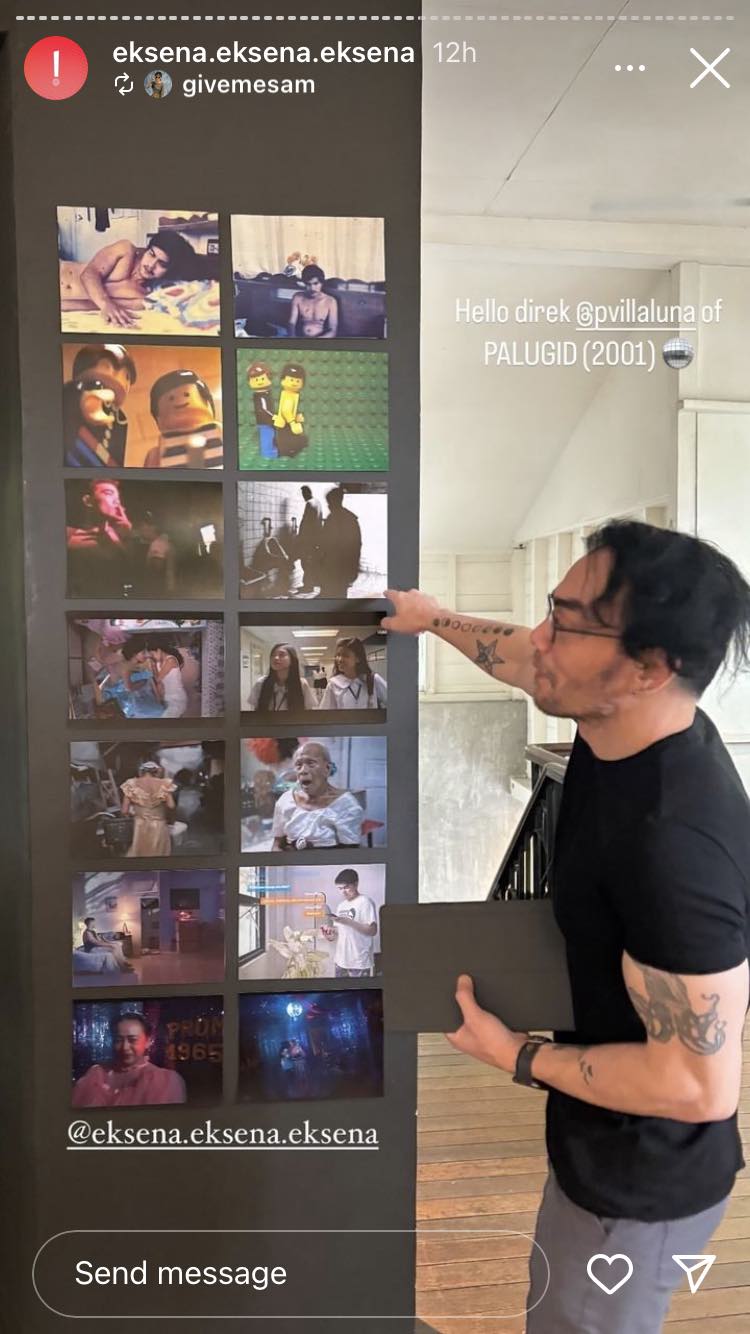
Samantha Lee’s Instagram Story reposted by Eksena!, featuring Paolo Villaluna with stills from the short film showcase
In its first edition, Eksena! attendees were also able to see the physical memorabilia from some of the organizing team member’s films. To those members, what was the experience like revisiting your previous works and sharing pieces of it—while possibly bearing vulnerability—for strangers?
Petersen: The idea of our special Reading Corner, featuring a mini-exhibit of queer short film screenplays with accompanying memorabilia and/or reimagined prop, came first. Then we thought, why not make this a proper introduction of the team by way of our own work?
We wanted the upstairs common area, right before the screening starts, to already engage our audience with something they can carry with them as well. It could be additional insight, or just plain old feeling from seeing these personal treasures out for everyone to see. Revisiting my thesis film script brought back a lot of warmth and youth (it’s been ten whole years since I’ve written it, and yet) and I wanted to share those feelings to whoever would pass by my chosen spot.
Celeste: It was nice to share and may objects pa that went along with the scripts/text. Definitely, may difference to the written version of something meant to be video, parang new secrets behind what’s seen/watched. At least for me, may [konting] hiya, pero busy rin ako that day, ’di ko na naisip haha!
Not to put pressure, but apart from screenings, booths, and talks, do you have other activities in mind for the next Eksena! editions? It was also cool that your first edition even had a spontaneous Ricky Lee book signing.
Petersen: The next editions will definitely take a different form, depending on the theme of the next short film program. The same way that our Talk centered around “The Past, Present, and Future of Pinoy Queer Cinema” complementing the experience of our program, we’d like to pair up a befitting experience for our audience outside of the cinema.
Think a post-screening drag performance set, or a one-act play fully acted by queer actors, or educational film workshops led by our queer film practitioners. Maybe even busking sessions by budding (yes, it could also be a pun!) artists. The kabaklaan possibilities are infinite.
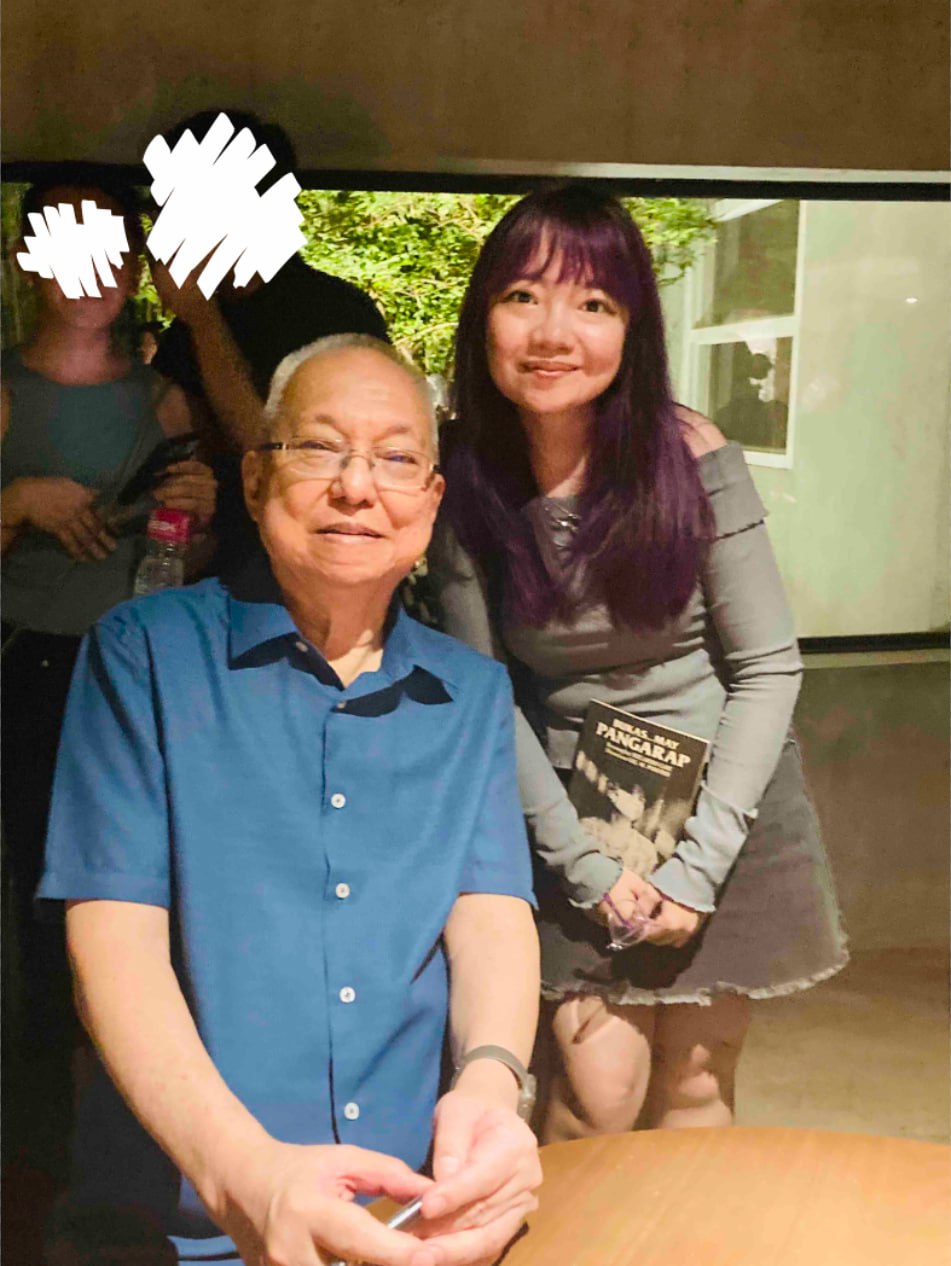
Scout associate editor Jelou Galang after getting her book signed by National Artist Ricky Lee
After the event, was there any specific feedback from an Eskena! attendee that moved you?
Petersen: There was an overwhelming outpour of love and gratitude as posted by our first edition attendees. Accompanied by a photo of filmmakers Samantha Lee and Paolo Villaluna’s Q&A session, someone wrote, “Most times I look for queer spaces to relate and express. This means so much to me.”
Another attached a photo of our first edition posters: “Salamat sa representasyon at sa pagpapalawak ng palugid. Patuloy ang pakikibaka hangga’t sa hindi na natin kailangan pang humanap ng espasyo sa dilim kung saan tayo tatanggapin.”
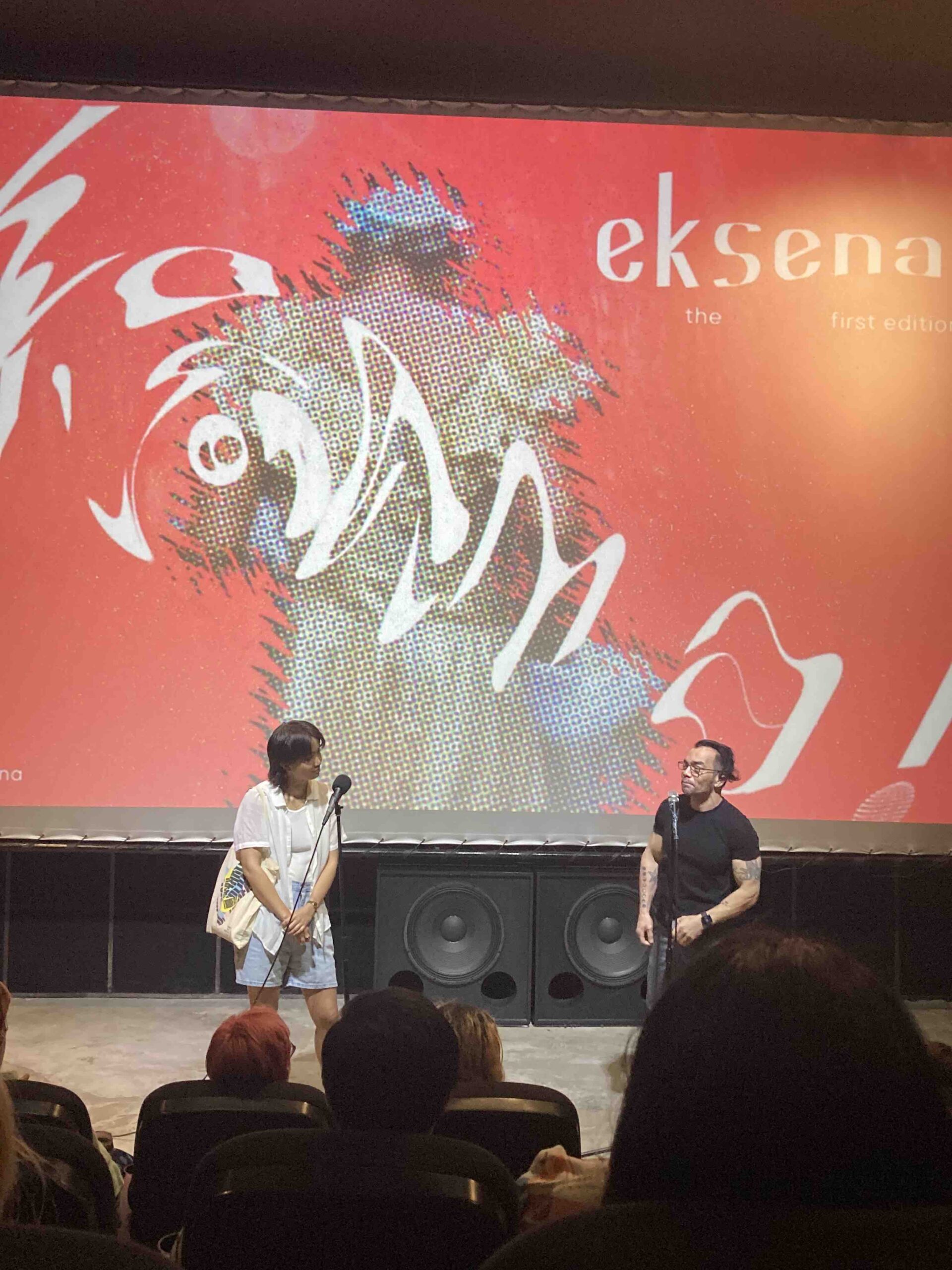
Filmmakers Samantha Lee and Paolo Villaluna during the post-screening Q&A session
Another one wrote what could be an entire summation of our mission: “My takeaway from Eksena! is that it’s inspiring to see how far we’ve come. I will forever be grateful to all the queer creatives who continue to tell our stories. But also, there is still so much to be done. So much stories untold and misrepresented. So, as members of the community, we have to be more intentional in involving ourselves in shaping our community. So, so important to keep learning! Let’s continue supporting initiatives like this and let’s continue empowering creatives!”
If you’re allowed to screen any film for the next Eksena!, which one would you pick?
Carl: No particular title, but I just want to see a Filipino short film about queer coming-of-age in the suburbs.
Celeste: “Grand Gestures” (2019) by Cody Abad. It initially was in exhibition during Cinemalaya lockdown (2020), so it definitely needs more audience. It’s a slow and quiet film on small gestures of care (offering food, cleaning a room, giving flowers).
JC: “Macho Dancer,” Lino Brocka. Sex work is work.
Kuki: “Ang Pagdadalaga ni Maximo Oliveros,” for sure! A canon in PH Queer Cinema, and ever-relevant. The way it portrays Maximo, a gay teen, as a desiring body and capable of choosing their wants and needs is brilliant. Not [many] films, even queer films, show this, so it’s really ahead of its time. I just love the tale’s complexity, grit, and decisiveness.
Kaj: “Di Ako Makatulog Kasi Wala Ka Sa Tabi Ko” (2010) by Jade Castro. Among Jade’s films, this is maybe the most telling of his gaze on the world. It’s so legible here. It’s Jade through and through, queer and inspiring—as a young confused filmmaker, this taught me a lot about what short films (and political films!) can and should do.
Patrick: Kanalan queer cinema!
Petersen: I would really want to present “Colossal” (2011) by Whammy Alcazaren to a new audience. I remember seeing it as a young film student dreamer back in the day, and thought, wow, the possibilities of (queer) cinema are endless! And the film feels so personal, so volatile, and so unapologetic and expressive about its own melancholia.
View this post on Instagram
Whether they be a guest panelist or audience, who do you wish to see next time?
Carl: Hopefully to have a panel with a filmmaker and another one from another industry.
Celeste: Honestly, Direk Wenn [Deramas] dahil marami akong gustong itanong tungkol sa paggawa. Kaso ’di na pwede, or kung mangyari man bokot noh! I guess interesting din marining on a panel ang mga queer experimental filmmakers like Whammy Alcazaren, kaso mahiyain siya… eme!
JC: Would love to see a transgender artist and their work/s be highlighted.
Kuki: I wanna see young audiences attending Eksena! in a program where we see queer films on/by children. As in field trip levels! I think it would be lovely if these baby badings get the chance to see themselves on-screen.
Patrick: Hopefully, we invite young and emerging queer filmmakers as panel.
Petersen: Following Celeste’s train of thought, wouldn’t it be amazing if we set up a panel of all of Direk Wenn Deramas’ collaborators, from actors to studio representatives down to his main staff and crew—and what if Vice Ganda attended!—and host some kind of oral historicizing of his beginnings, the development of his style, and his films’ impact up to this day? We could do the same for the likes of Ishmael Bernal, Lino Brocka, or Joey Giosiengfiao, if we find enough leads.
What is your dream for Filipino queer cinema?
Carl: To have a proper distribution and marketing for these films. With this, the message gets across not just within the community but every audience out there for them to understand that we exist.
Celeste: Ay magtuloy-tuloy, mag-evolve to forms we’ve never seen before. Queerness, after all, isn’t just finding equivalents of our daily life in the heteronorm—but finding our own desires, wants, and attaining such [in] our own queer way, too!
JC: For it to be seen by a wider audience, to not be rated unfairly solely for its theme, for it to be used as a tool to inspire and liberate queer folks from their struggles, and of course, for a queer film to be the highest grossing film of all time.
Kuki: Hard question! But time and again, I just want the world for us. I want it all. Mundong para sa’tin.
Patrick: More funding and support for Filipino queer cinema!
Petersen: That it gets easier for us to make queer works. That we get to see more baby queers express themselves in their purest form, without fear or hesitation.
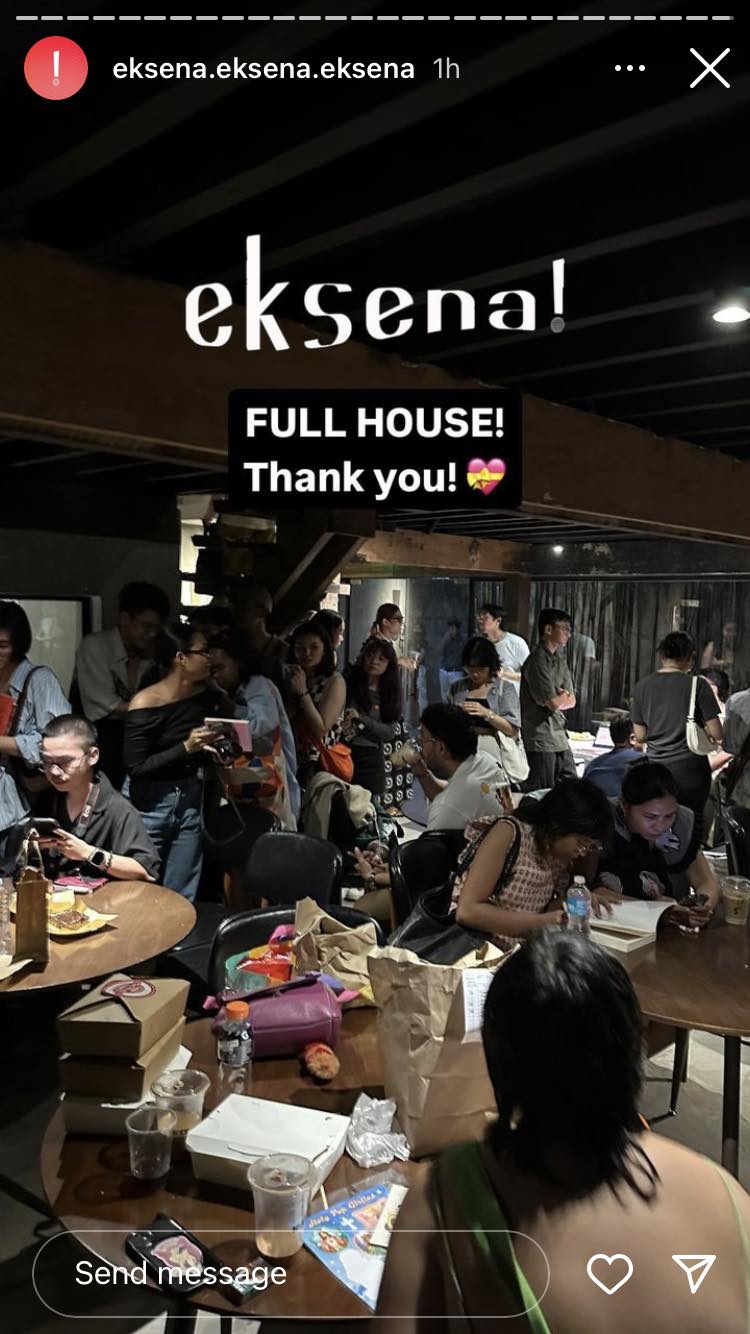
An Instagram Story by Eksena! after the event
Read more:
Trans Filipinos are the protagonists in these 6 films
These Asian queer romance series will make you go: ‘God, me when?’
Understanding Filipino youth culture through regional cinema
Banner’s first photo is a still from @eksena.eksena.eksena on Instagram, featuring the film “Ang High School at Si Olive”
The rest of the event photos by Jelou Galang


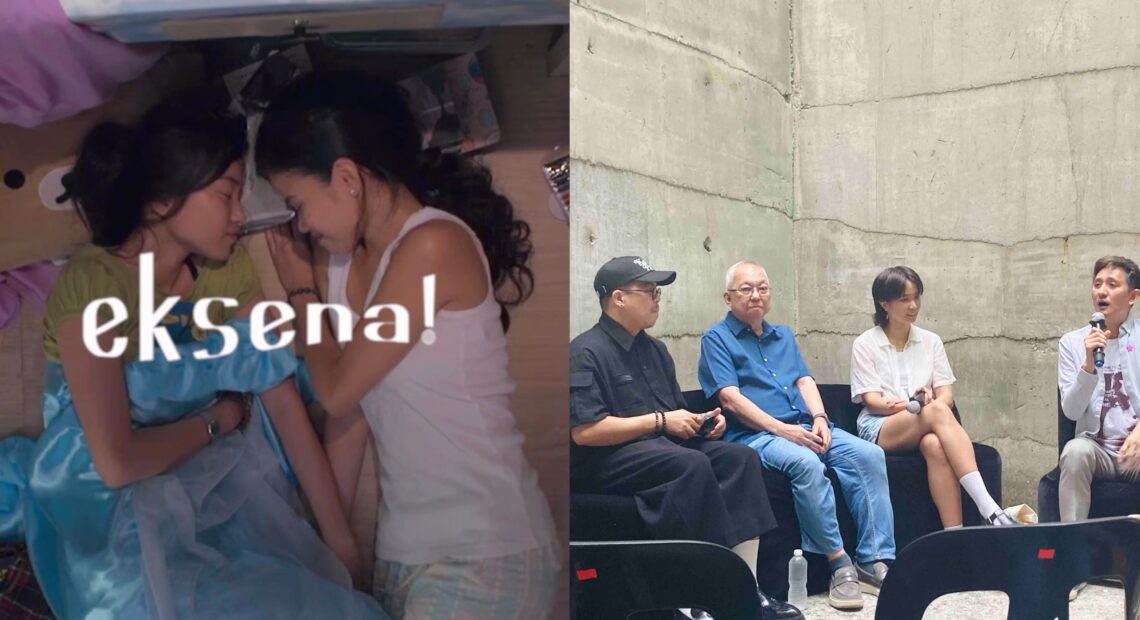













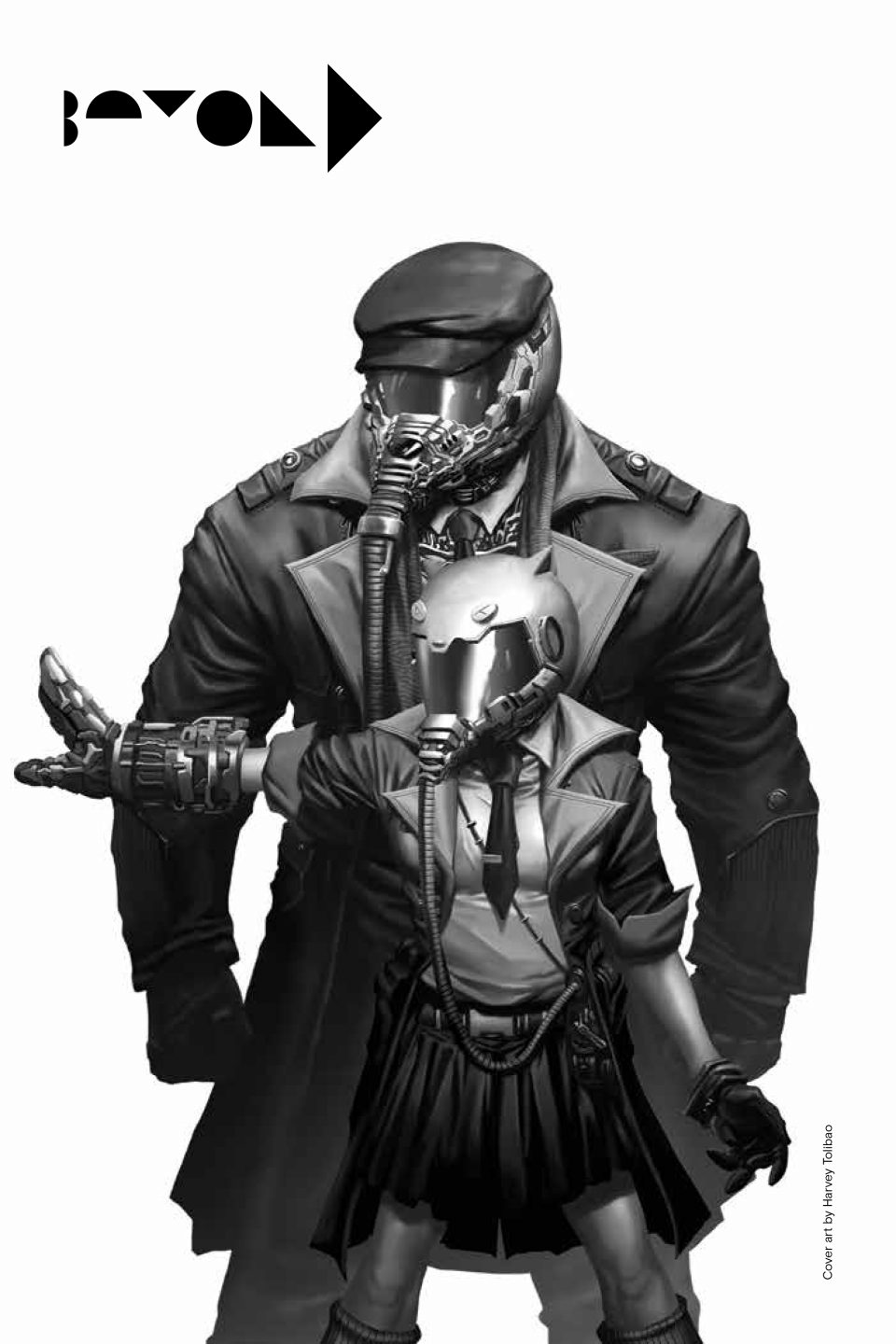
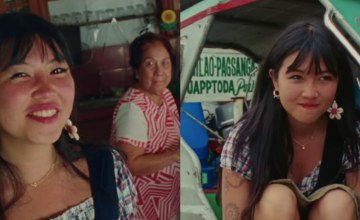







Comments